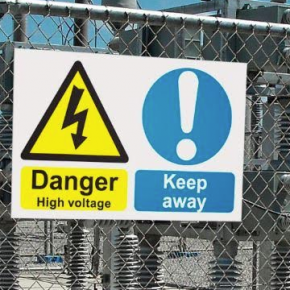
The Different Types Of Safety Signs And Their Importance – a Reece Safety article
Safety signs are a common occurrence within the workplace, whether you work within an office, retail environment or a construction site, they are crucial to making both staff and visitors aware of any potential hazards and increase safety awareness. Here, Reece Safety highlight some of the different types of safety signs, and their importance.
Correctly Displaying Signs
In order to get the most from your safety signs, it’s important they are placed within the correct locations around the workplace.
This includes being at a suitable height, in well-lit locations, and within the relevant areas of the potential hazards or safety equipment.
It is important to include signs of various of sizes, shapes and colours so they are easily noticed. The colour, shape and size should adhere to the standardised signs, to ensure they are easily recognisable.
Shapes
The shape of sign can often help to depict the message it is conveying.
Triangle – Signs of this shape will often be depicting warnings or hazards, for example wet floor or electric shock risk.
Circle – These are often giving mandatory instructions such as which safety equipment should be worn in that area.
Square/Rectangle – Square signs often give information such as fire safety instructions.
Circle with Line – A circle with a 45° line through it will be highlighting a forbidden action such as no entry.
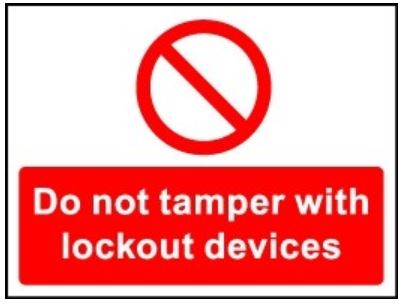
Colours
As part of the safety sign standardisation in the UK, there are four main colours of safety signs which are associated with different warnings. Colours allow for easy interpretations and relay the importance of the sign and potential hazard to the viewer.
Red – Will represent a prohibition sign and is used to emphasise forbidden actions, and highlight areas of emergency devices such as fire safety equipment.
Blue – Part of the mandatory signs, these demonstrate different behaviours which are required before proceeding, such as wearing goggles or a hard helmet.
Green – Represents safety signs and will often highlight safe routes such as fire escapes or points of first aid equipment.
Yellow – Sometimes amber in colour, the yellow sign alerts the viewer of a potential hazards by issuing a warning. This can include signs such as warnings of high voltage or chemicals.
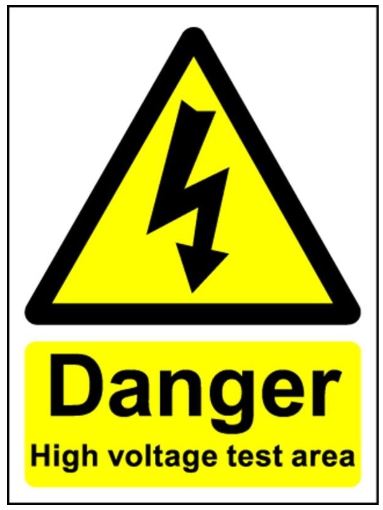
Types of Signs
There are many different types of safety signs which, due to their make-up of shape and colour, are easily recognisable for the action they require, or information they are giving.
A prohibition sign will be a mix of the colour red and a circle with a slash through it, emphasising an action which is not allowed in this area.
A mandatory sign on the other hand is something which you must do. These are circular in shape and often blue in colour, and can include things such as wearing eye protection in a particular area.
Another type of safety sign is the warning sign. Easily recognisable for their triangle shape and bright yellow colour, a warning sign will make people aware of any potential hazards in that area, such as high voltage.
Informative and safety signs are square or rectangular and are often green. These signs will give safety information such as the location of first aid equipment.
The informative sign can also be red and depict information such as fire safety and the location of fire alarms.
Keeping workers and visitors safe is of the utmost importance, and having visual communications of hazards and safety information will help to guarantee your business is compliant, safe and secure.
It is important anyone working on your premises understands and is aware of the signs you display and the hazards they refer to. This knowledge will help to ensure the safety of your employees and visitors.
You should make sure older signs are replaced to keep them fresh and easy to read; this, along with training to recognise the messages the signs depict, will help to keep your employees and visitors safe.
Latest news
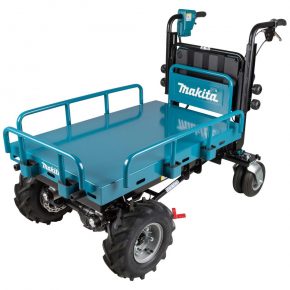
1st May 2024
Easy transportation with Makita’s DCU601 36V LXT
Power tool manufacturer Makita has added a new battery powered wheelbarrow to its extensive LXT outdoor power equipment range.
Posted in Articles, Building Industry News, Building Products & Structures, Garden, Hand Tools, Innovations & New Products, Plant, Equipment and Hire, Power Tools, Restoration & Refurbishment, Retrofit & Renovation, Site Preparation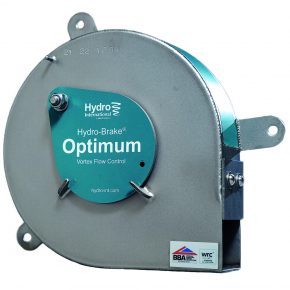
1st May 2024
Hydro International incorporates future-proof design for Hydro-Brake® Optimum
Hydro International, an industry leader in water management products and services, is redefining the standard for hydraulic efficiency and adjustability.
Posted in Articles, Building Industry News, Building Products & Structures, Building Regulations & Accreditations, Building Services, Drainage, Drainage Services, Drainage, Guttering, Soffits & Fascias, Facility Management & Building Services, Information Technology, Innovations & New Products, Plumbing, Retrofit & Renovation, Sustainability & Energy Efficiency
30th April 2024
ASSA ABLOY Door Group strengthens offering with partnership
ASSA ABLOY Door Group is proud to announce a new internal restructure that sees the company joining forces with all comparable business units across Europe, the Middle East, India and Africa, to form a new global division – the ASSA ABLOY EMEIA Door Business Segment.
Posted in Access Control & Door Entry Systems, Architectural Ironmongery, Articles, Building Associations & Institutes, Building Industry News, Building Products & Structures, Building Services, Doors, Facility Management & Building Services, Restoration & Refurbishment, Retrofit & Renovation, Security and Fire Protection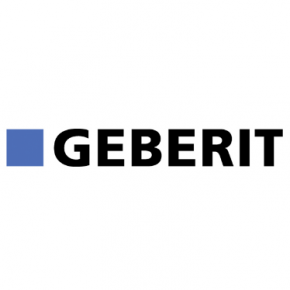
30th April 2024
Geberit exhibiting at British Pig & Poultry Fair 2024
Bathroom and piping manufacturer Geberit will be exhibiting at the British Pig & Poultry Fair at NEC Birmingham (15 – 16 May 2024).
Posted in Articles, Building Industry Events, Building Industry News, Building Products & Structures, Building Services, Exhibitions and Conferences, Facility Management & Building Services, Innovations & New Products, Pipes, Pipes & Fittings, Plumbing, Retrofit & Renovation
 Sign up:
Sign up: